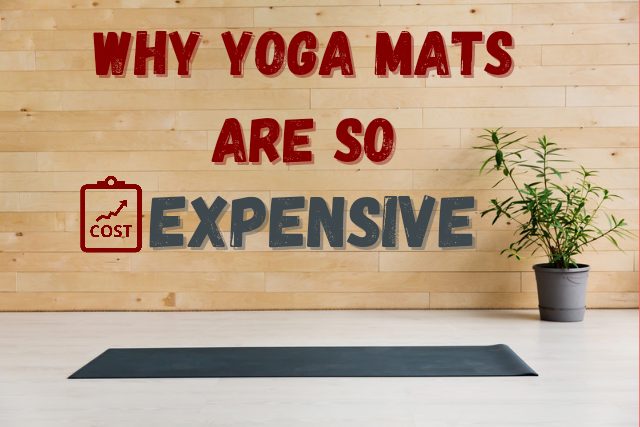Pathway to Inner Peace: What Is ‘Real’ Yoga?

Dive into the heart of yoga, a treasure trove of wisdom that’s journeyed across centuries and continents from the spiritual landscapes of India. ‘Real’ yoga is more than mastering difficult poses or sweating in a trendy fitness class. It’s an enriching experience that ties together body, mind, and spirit, guiding you on a fascinating voyage of wellness and self-discovery.
Prepare for an exciting journey beyond the mat. With ‘real’ yoga, you don’t just perform poses; you discover the path to inner peace and awakening. You connect with your deepest self, unlocking a sense of tranquillity and self-awareness.
This exploration is filled with wonder, surprise, and a sense of fulfillment that’s sure to captivate you every step of the way.”
What is the difference between yoga and real yoga?
In the West, yoga often denotes a physical practice emphasizing flexibility and strength. While these elements are part of yoga, ‘real’ yoga delves deeper. Real yoga embraces ethical living, self-reflection, breath control, meditation, and physical postures, offering a holistic approach to wellness. It is about cultivating awareness, finding balance, and pursuing spiritual growth.
“Grounded in Tradition: The Four Pillars of ‘Real’ Yoga”
Ethical Guidelines (Yamas & Niyamas)
Fundamental principles guide behavior towards others (Yamas) and oneself (Niyamas). These ethical pillars promote respect, integrity, contentment, and self-discipline.
Physical Postures (Asanas)
Far from being just fitness exercises, asanas in real yoga are tools to enhance overall health, prepare the body for meditation, and cultivate mindfulness.
Breath Control (Pranayama)
Breath is life’s vital force. Pranayama techniques help regulate this energy, promoting physical vitality and mental tranquillity.
Meditation (Dhyana)
In a state of focused concentration, meditation helps quiet the mind, leading to self-realization and inner peace.
“Back to the Roots: The Compelling Reasons to Practice ‘Real’ Yoga”
In an era where quick results and instant gratification dominate, why should one turn to ‘real’ yoga, a practice that demands patience, dedication, and self-reflection? The answer lies in yoga’s profound ability to transform lives beyond physical well-being.
- Self-discovery and peace.
‘Real’ yoga offers a holistic path, connecting the body, mind, and spirit. It isn’t merely about performing complex postures or breaking a sweat. It’s about cultivating mindfulness, self-discipline, and compassion. It’s about embarking on an inward journey toward self-discovery and peace.
- Decision-making
By practicing ‘real’ yoga, one begins to navigate life with increased awareness, patience, and stability. This self-awareness fosters conscious decision-making in our relationships, work, diet, and lifestyle, leading to improved overall well-being.
- connection with the community
Furthermore, ‘real’ yoga encourages us to look beyond the self. It enlightens us about our connection with the community, the environment, and the universe. Real yoga transcends the personal, ultimately guiding us toward unity and oneness. It inspires us to live purposefully, respectfully, and compassionately – and lies its true power.
“Unlocking the Bounty: Delving into the Profound Benefits of Real Yoga”
Breathe Better
Pranayama techniques enhance lung function, instill calmness, and help manage stress effectively.
Energize Your Full Body
Asanas stimulate our body systems, infusing dynamism, and vigor.
Relieve Your Stress
The meditative elements induce a relaxation response, fostering emotional resilience.
Weight Management
With consistent practice and mindful nutrition, yoga can contribute to healthy weight management.
“Did ‘Real’ Yoga Vanish? Unraveling the Mystery”
As yoga traveled from the East to the West, it evolved, adapting to its new cultural environments. Its essence – a profound spiritual discipline – morphed into a more fitness-oriented practice focusing on physical postures and flexibility. The globalization and commercialization of yoga led to the birth of numerous styles like ‘hot yoga,’ ‘power yoga,’ and others, each promising unique benefits.
Although beneficial, this physical-oriented adaptation often overshadows yoga’s philosophical and spiritual roots. We see a rise in yoga as a lifestyle accessory, practiced in designer outfits within aesthetically pleasing studios. Amidst this bustling expansion, one might question, “What happened to ‘real’ yoga?”
However, all is not lost.
The core of traditional yoga continues to thrive amidst yoga enthusiasts and dedicated practitioners worldwide. These individuals and communities are driven to keep the authentic spirit of yoga alive, emphasizing its philosophy, ethical principles, breathwork, and meditation alongside the physical postures.
Frequently Asked Questions
What is the best time to practice real yoga?
The ideal time for yoga practice is early morning or evening on an empty stomach.
Is real yoga suitable for beginners?
Yes, real yoga is adaptable to every individual’s capabilities. Start slowly, respect your limits, and progress gradually.
Can I lose weight with real yoga?
A balanced diet and consistent yoga can contribute to healthy weight management by enhancing mindfulness and promoting physical well-being.
Is real yoga a religious practice?
While rooted in Hindu philosophy, yoga itself isn’t religious. It’s a holistic practice accessible to all, regardless of faith or belief system.
Does real yoga require special equipment?
All you need is a yoga mat. Comfortable clothing and a quiet space are also beneficial.
How often should I practice ‘real’ yoga for optimal benefits?
It is recommended to practice ‘real’ yoga regularly, regardless of personal preferences or lifestyle. Consistency is more important than the length of each session. Even 15-20 minutes a day can make a significant difference with time.
Is ‘real’ yoga suitable for beginners?
Yes! ‘Real’ yoga is about personal growth and exploration, so it suits everyone, regardless of age, fitness level, or yoga experience. Yoga is not a competition but a journey. Some aspects beginners may find challenging, but with practice and patience, they’ll gain understanding.
What differentiates ‘real’ yoga from other forms of yoga?
It includes more than just physical exercises. A holistic approach unites body, mind, and spirit. It promotes self-discovery, inner peace, and a sense of balance in mind and body.
How can ‘real’ yoga benefit my daily life?
The benefits of ‘real’ yoga include improving physical strength and flexibility, mental clarity, stress reduction, and inner peace.
Conclusion
As we conclude, it’s essential to remember that yoga is more than just an exercise regimen – it’s a comprehensive practice encompassing body, mind, and spirit. The journey towards ‘real’ yoga involves patience and dedication, but the rewards are immeasurable. It cultivates mindfulness, self-discipline, and compassion, leading to self-awareness, conscious decision-making, and unity.
In a rapidly changing world, turning to the roots of ‘real’ yoga can bring a sense of calm and balance. Let’s keep sight of yoga’s true essence amidst its various adaptations. Ultimately, practicing yoga is a personal journey that leads to self-discovery, peace, and a more meaningful existence.




